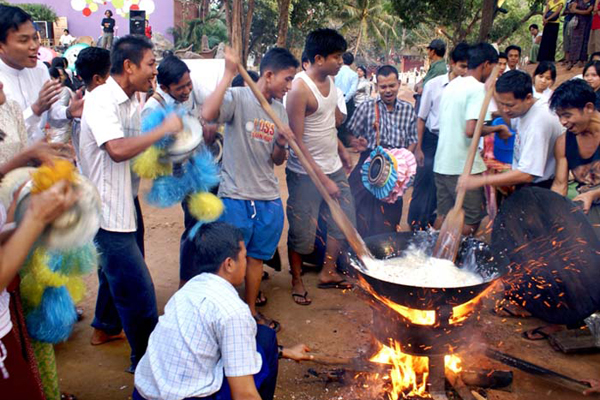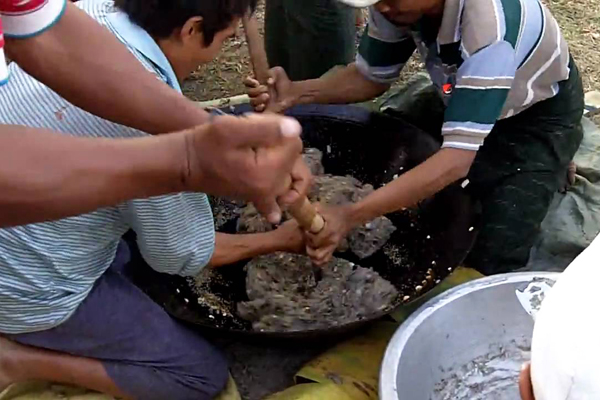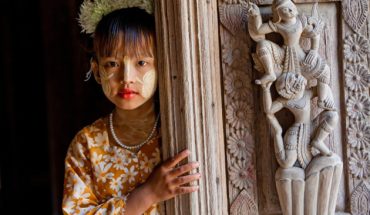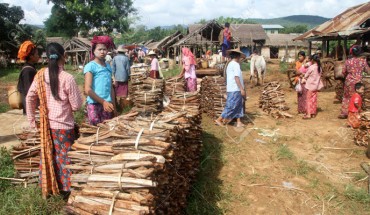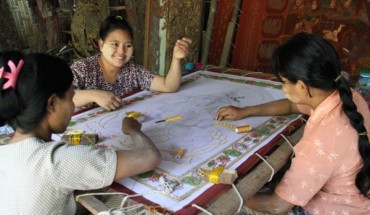I had a chance to take part in this wonderful sticky rice festival last year. The people cook sticky rice to offer to the Budha in the morning of 15th day of the month. To prepare for the festival, the locals bring rice, peanuts, ginger, sesame and other fruits of the land. The sticky rice is dipped into the water over night; then, they roast the peanuts, coconut slices and sesame seeds, thinly slice the ginger and fry it. The fun begins!
Two to four strong men stir the rice in a large heated wok, going round and round until it is cooked. They had to work together as their paddles were moving in sync. To make this sticky rice dish or htamane requires efforts and a number of works. When they are tired, another will take their place at the wok. It took them almost a half an hour before it becomes a sticky glutinous mass. During this time, someone adds the remaining ingredients in and they get mixed in with the rice.
After the first batches of Htamane had been finished, the rice is offered to the Buddha and then was given away for free to all visitors coming to the pagodas. The generous portion of the gingery white htamane with lots of roasted peanuts and the brown and slightly sweeter htamane warmed and fortified us for the rest of the evening. I loved it. The glutinous rice was so sticky that it was easier to eat without forks, tearing off small portions with your hands.
In this festival, there were long lines of people attending and queuing up for the htamane and other dishes such as mohinga, which added vibrancy to the festive atmosphere. People are very busy with their own business; while the young catch up with their friends, the old observe all the activities, and the organizers have to make sure that everyone was welcomed and had food.
I left the festival with full of savory food and a renewed sense of the role of bringing people together to celebrate, cook, share and have a good time.


